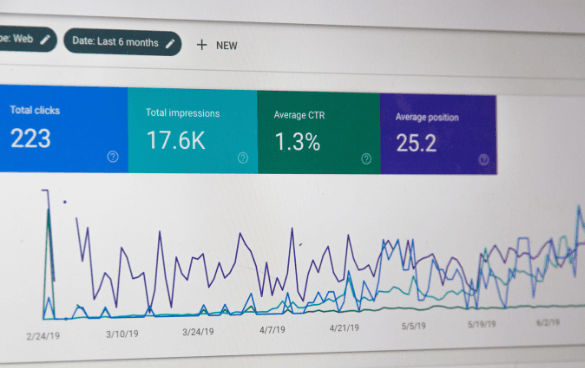Just How to Take Advantage Of Remarketing In Google Analytics for Your Company
Wiki Article
Harnessing Remarketing in Google Analytics: A Comprehensive Overview
Harnessing remarketing in Google Analytics provides companies a tactical side in getting to out to potential customers. This guide will lose light on the important actions involved in utilizing the full potential of remarketing in Google Analytics, leading to boosted marketing end results.Understanding Remarketing in Google Analytics
Remarketing in Google Analytics allows services to strategically target individuals that have formerly interacted with their site or mobile app. By leveraging information from Google Analytics, services can produce tailored remarketing lists based upon individual behavior, such as web pages seen, activities taken, or details objectives achieved. This effective tool enables companies to re-engage with users that have revealed rate of interest in their products or solutions, eventually enhancing the possibility of conversion.Comprehending the different sorts of remarketing methods is vital for an effective project - What Is “Remarketing” In Google Analytics?. Google Analytics provides various choices, consisting of conventional remarketing, vibrant remarketing, and remarketing listings for search ads (RLSA) Each type serves a special objective and can be tailored to fulfill specific advertising purposes
Moreover, examining the efficiency of remarketing campaigns is necessary for optimizing outcomes. Google Analytics supplies beneficial insights into the efficiency of different remarketing techniques, enabling companies to make data-driven choices and fine-tune their targeting strategy. By continuously keeping an eye on and changing remarketing efforts based on analytics data, businesses can optimize ROI and drive success in their marketing campaigns.
Establishing Remarketing Projects

After establishing up audience checklists, the following step is to connect Google Analytics with Google Advertisements. By connecting these 2 platforms, businesses can flawlessly transfer audience listings from Google Analytics to Google Advertisements for remarketing purposes. This assimilation enables more accurate targeting and much better project efficiency.
When the accounts are linked, companies can create remarketing campaigns in Google Advertisements utilizing the target market details formerly defined in Google Analytics. These projects can be personalized with certain ad creatives, messaging, and bidding strategies to successfully re-engage with past site visitors and drive conversions. By following these actions, services can utilize the power of remarketing to boost their advertising and marketing initiatives and raise ROI.
Making Use Of Audience Segmentation Approaches

Predefined sectors in Google Analytics allow you to swiftly evaluate typical target market groups like new individuals, returning individuals, or customers that completed a specific goal on your web site. Customized sections, on the other hand, enable you to create one-of-a-kind sectors based on specific criteria that are essential to your business objectives. Dynamic remarketing checklists automatically change based upon customer behavior, showing investigate this site personalized ads to individuals that have actually connected with your site particularly methods.
Studying Remarketing Efficiency Metrics
Upon assessing the effectiveness of remarketing projects in Google Analytics, the analysis of crucial efficiency metrics offers important insights into target market engagement and conversion rates. By diving right into metrics such as click-through prices (CTR), conversion rates, expense per acquisition (CERTIFIED PUBLIC ACCOUNTANT), and return on ad invest (ROAS), marketing experts can determine the success of their remarketing hop over to here efforts. Examining these metrics makes it possible for marketing professionals to optimize campaigns, refine target market targeting, and assign spending plans properly to improve overall remarketing efficiency.Maximizing Remarketing Methods
When refining remarketing approaches in Google Analytics, concentrating on audience segmentation is paramount for achieving campaign success. By splitting your audience right into certain segments based upon their habits, demographics, or passions, you can tailor your ads much more effectively to every group. This targeted technique enhances the probability of engaging customers that have actually already revealed interest in your product and services, leading to greater conversion prices.Another important facet of maximizing remarketing techniques is continuously testing and refining your campaigns (What Is “Remarketing” In Google Analytics?). A/B testing different advertisement creatives, messaging, or offers can help you recognize what reverberates ideal with your audience and drives one of the most conversions. By examining the efficiency of these tests in Google Analytics, you can make data-driven decisions to enhance your remarketing efforts further
Furthermore, leveraging dynamic remarketing can substantially boost your campaign results. This attribute permits you to reveal tailored advertisements to users based upon their past interactions with your site, showcasing services or products they have formerly watched. By providing tailored web content to customers based on their interests and habits, vibrant remarketing can assist enhance involvement and drive conversions.
Final Thought
In conclusion, utilizing remarketing in Google Analytics is a calculated method to target users that have actually previously involved with a website. By producing tailored target market listings and making use of audience division approaches, services can enhance remarketing projects for boosted conversion prices. Examining performance metrics and constantly maximizing methods are critical for making the most of the effectiveness of remarketing initiatives.Google Analytics visit our website provides different options, including standard remarketing, vibrant remarketing, and remarketing checklists for search ads (RLSA)After setting up audience lists, the next action is to link Google Analytics with Google Advertisements. By connecting these two platforms, organizations can effortlessly move audience listings from Google Analytics to Google Ads for remarketing purposes.When the accounts are connected, companies can develop remarketing projects in Google Ads making use of the audience details formerly defined in Google Analytics.When refining remarketing approaches in Google Analytics, focusing on target market segmentation is extremely important for attaining project success.
Report this wiki page